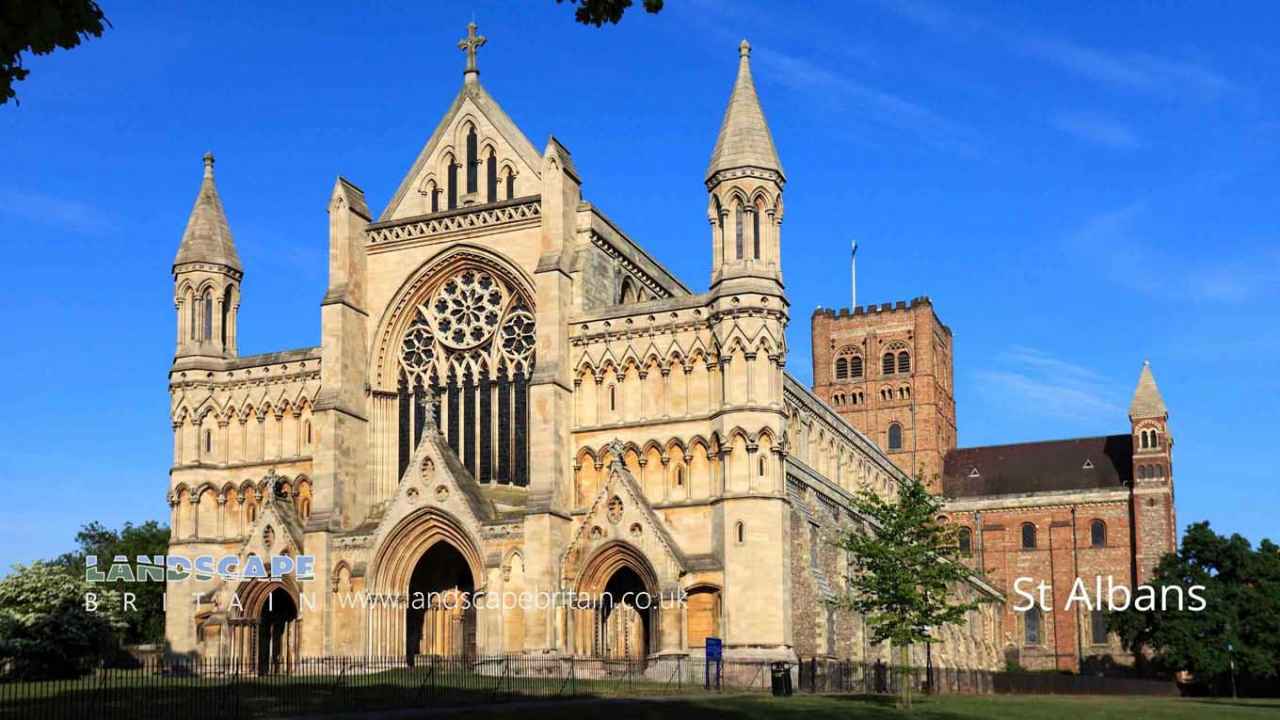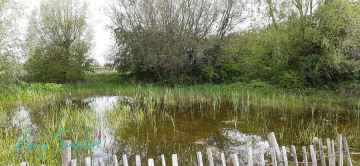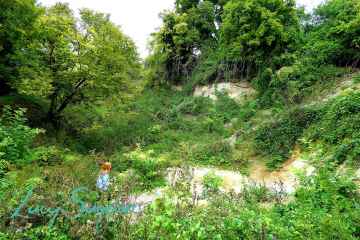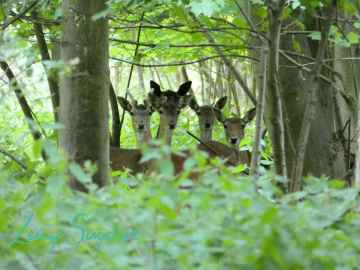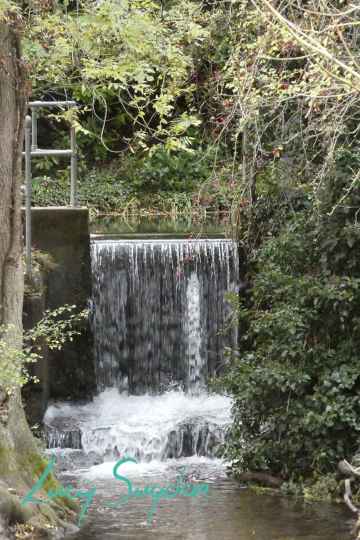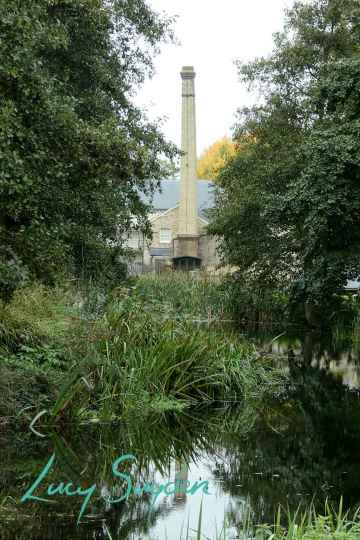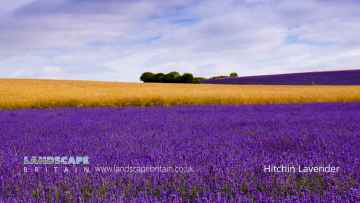St Albans is a City in the county of Hertfordshire.
The city of St Albans is located in Hertfordshire, in the southern part of England.
It is situated in the commuter belt north of London, and is known for its large cathedral. The cathedral features medieval wall paintings, and is a popular tourist destination.
Nearby, Verulamium Park contains ornamental lakes and the remains of the city’s ancient Roman wall. The Verulamium Museum is also located here, and displays artefacts from the city’s Roman past, including mosaics and the Sandridge Hoard of gold coins.
St Albans is a beautiful city with a rich history, and is well worth a visit.
St Albans postcode: AL1 3
There are great places to visit near St Albans including some great cities, villages, lakes, parks, hiking areas, towns, geological features, woodlands, nature reserves, waterfalls, historic buildings, gardens, country parks, ruins, shopping centres, attractions, castles and bluebell woods.
Letchworth, and St Albans are great places to visit near St Albans if you like cities.
There are a number of villages near St Albans including Norton, Redbourn, Anstey, Therfield, Chorleywood, Essendon, and Great Amwell.
Norton Pond, Radwell Mill Lake, and Hatfield Forest Lake are some of St Albans best lakes to visit near St Albans.
Broadway Gardens, and Chorleywood Common are great places to visit near St Albans if you like parks.
Don't miss Letchworth’s Greenway, and Oughtonhead Common Nature Reserve's hiking areas if visiting the area around St Albans.
Towns to visit near St Albans include Hitchin, Bishop's Stortford, Royston, Welwyn Garden City, Baldock, Sawbridgeworth, and Hatfield.
Hill End Chalk Pit is a great place to visit close to St Albans if you like geological features.
Woodlands to visit near St Albans include Hitchwood, Hatfield Forest, and Ashridge Estate.
Oughtonhead Common Nature Reserve, Stotfold Watermill and Nature Reserve, and Chorleywood Common are some of St Albans best nature reserves to visit near St Albans.
Oughtonhead Waterfall is a great place to visit close to St Albans if you like waterfalls.
St Albans has some unmissable historic buildings nearby like Stotfold Watermill and Nature Reserve, Church of Saint Mary at Hitchin, Wimpole Hall, Wimpole Ruins, Hatfield House, and Rye House Gatehouse.
There are a number of gardens near to St Albans including Hitchin Lavender.
Hatfield Forest, Wimpole Estate, Stanborough Park, Pishiobury Park, and Ashridge Estate are great places to visit near St Albans if you like country parks.
Wimpole Ruins, and Berkhamsted Castle are some of St Albans best ruins to visit near St Albans.
Don't miss atria Watford's shopping centres if visiting the area around St Albans.
Attractions to visit near St Albans include Planet Ice Hemel Hempstead, and East Herts Miniature Railway.
The area close to St Albans boasts some of the best castles including Berkhamsted Castle.
Don't miss Ashridge Estate's bluebell woods if visiting the area around St Albans.
St Albans History
There are some historic monuments around St Albans:
Areas of St Albans
Like most towns and cities St Albans is comprised of a number of areas, once separate villages or small towns and parishes now part of St Albans.
Many of the areas of St Albans have their own character and places of interest.
Places to see near St Albans
Etymology of St Albans
St Albans takes its name from the first British saint, Alban. The most elaborate version of his story, Bede’s Ecclesiastical History of the English People, relates that he lived in Verulamium, sometime during the 3rd or 4th century, when Christians were suffering persecution. Alban met a Christian priest fleeing from his persecutors and sheltered him in his house, where he became so impressed with the priest’s piety that he converted to Christianity. When the authorities searched Alban’s house, he put on the priest’s cloak and presented himself in place of his guest. Consequently, he was sentenced to endure the punishments that were to be inflicted upon the priest, unless he renounced Christianity. Alban refused and was taken for execution. In later legends, his head rolled downhill after execution and a well sprang up where it stopped.

















